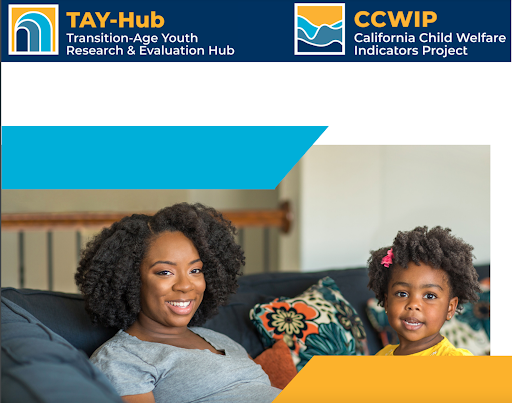
She is a mother of five children. A sophomore at Sitting Bull College pursuing criminal justice studies, and a manager providing economic development loans on the Standing Rock Sioux reservation. She is headed to law school.
But Nicole Alkire Grady, age 33, once had to drop out of college because she couldn’t find child care. It’s an all-too-common predicament with one clear solution offered at post-secondary schools focused on serving Indigenous students, researchers have found: Tribal colleges and universities, known as TCUs, are more than twice as likely to provide on-campus child care to parenting students when compared with non-tribal institutions.
Researchers at the nonpartisan organization Child Trends say that support can make all the difference.
“Something that’s been demonstrated in previous research is that parenting students actually often have better grades — they have very high motivation to do well in school,” said Jessica Warren, a senior research analyst on Child Trends’ youth development team. “But they often don’t complete their education or take a very long time. Child care is a huge part of that.”
In findings being published today, Warren and Deana Around Him, Child Trends research scholar and member of Cherokee Nation, examined federal education data on colleges and universities receiving financial aid funding. The new analysis from the nation’s leading research organization focused on improving the lives of vulnerable children and youth found that one key to the success of these tribal colleges and universities is their on-campus child care. Forty-three percent of TCUs provided that service during the 2021-2022 academic year’s fall semester, compared to 21% of other degree-granting institutions.
Parenting students are a sizable population among Indigenous students. Data from The Aspen Institute and the Institute for Women’s Policy Research said parents comprise 29% of American Indian or Alaska Native college students and 36% of Indigenous women in college. Warren said 21% of American Indian or Alaska Native men in college are fathers.
With the COVID-19 pandemic stretching into a devastating third year, the supportive nature of on-campus child care, and proper funding, remains a critical component of educational support for Indigenous scholars, the Child Trends researchers found.

There are currently 32 fully accredited tribal colleges and universities, located in some of the nation’s most impoverished regions in the midwest and the south, according to the U.S. Department of Education. The vast majority of students in 2020 identified as American Indian or Alaska Native at the schools, which integrate Indigenous culture, languages and traditions into their academic environment. According to the American Indian College Fund, 86% of TCU students complete their chosen field of study, compared to fewer than 10% of Indigenous students who attend mainstream colleges and universities for bachelor’s degrees directly after high school.
After leaving a non-tribal college where she struggled to raise her children while pursuing an academic path, Grady — whose children span in age from 6 months to 15 years old — is now more confidently situated at a TCU in Fort Yates, North Dakota. Inspired by her own custody battles, she aims to pursue law school after completing her bachelor’s degree in order to provide Indigenous representation in tribal courtrooms.
Grady praised Sitting Bull College and described the indispensable child care support her school has provided her for the last two years. She’s now in the process of enrolling her three daughters in Sitting Bull’s on-campus child care center known as “The Nest,” which draws on cultural and community influences by teaching the Lakota language and other Standing Rock customs.
While she’s in class, her kids receive lessons in ribbon skirt-making, Indigenous cooking, and activities related to the buffalo hunt.

“It’s a big sense of community living here,” she said. “One of the biggest things about Sitting Bull is that they value the family, and family and community, knowing that if you are a parent you have to work to get there.”
Warren of Child Trends noted that while many colleges work to connect students with outside child care resources, parenting students often have little time and money to spare — making on-campus child care so vital. And for Indigenous parents, it could make the difference between obtaining a degree or leaving school to care for your children.
“The higher education system has to be rethought if it’s going to be equitable, and if it’s going to actually serve the students who are currently in it — and the students who will be in the future,” Warren said. “For certain populations, they have been explicitly left out of that system’s design.”
Quality data assisting Indigenous communities has historically been limited and elusive, and Around Him and Warren hope their ongoing research will serve those most in need of research that will drive public policy and social investments. This is particularly important in the field of higher education, which has the potential to lift generations of Native Americans out of poverty.
The COVID-19 pandemic exacerbated the challenges, with significant declines in Native American undergraduate student enrollment, according to findings from the National Student Clearinghouse Research Center. Data collected in 2020 by the American Indian Higher Education Consortium found two primary reasons for dropping enrollment, among others: lack of day care, and uncertainty for child care availability.
Tribal colleges and universities, in contrast, draw on cultural and community assets to support students and their children. This two-generation approach — acknowledging parenting students currently attending school and children being raised that will eventually attend school — is central to the missions of TCUs.
These Indigenous-led schools recognize “parenting students as valuable people within our communities — who maybe need a couple of extra supports to help them pursue their education and then be really awesome contributing members of our tribal nations,” Around Him said. “And the study released today,” she added, “is one way for us to begin a conversation around how we can better support these students.”
Other news outlets don’t cover child welfare and juvenile justice like we do.
News for people, not for profit.





